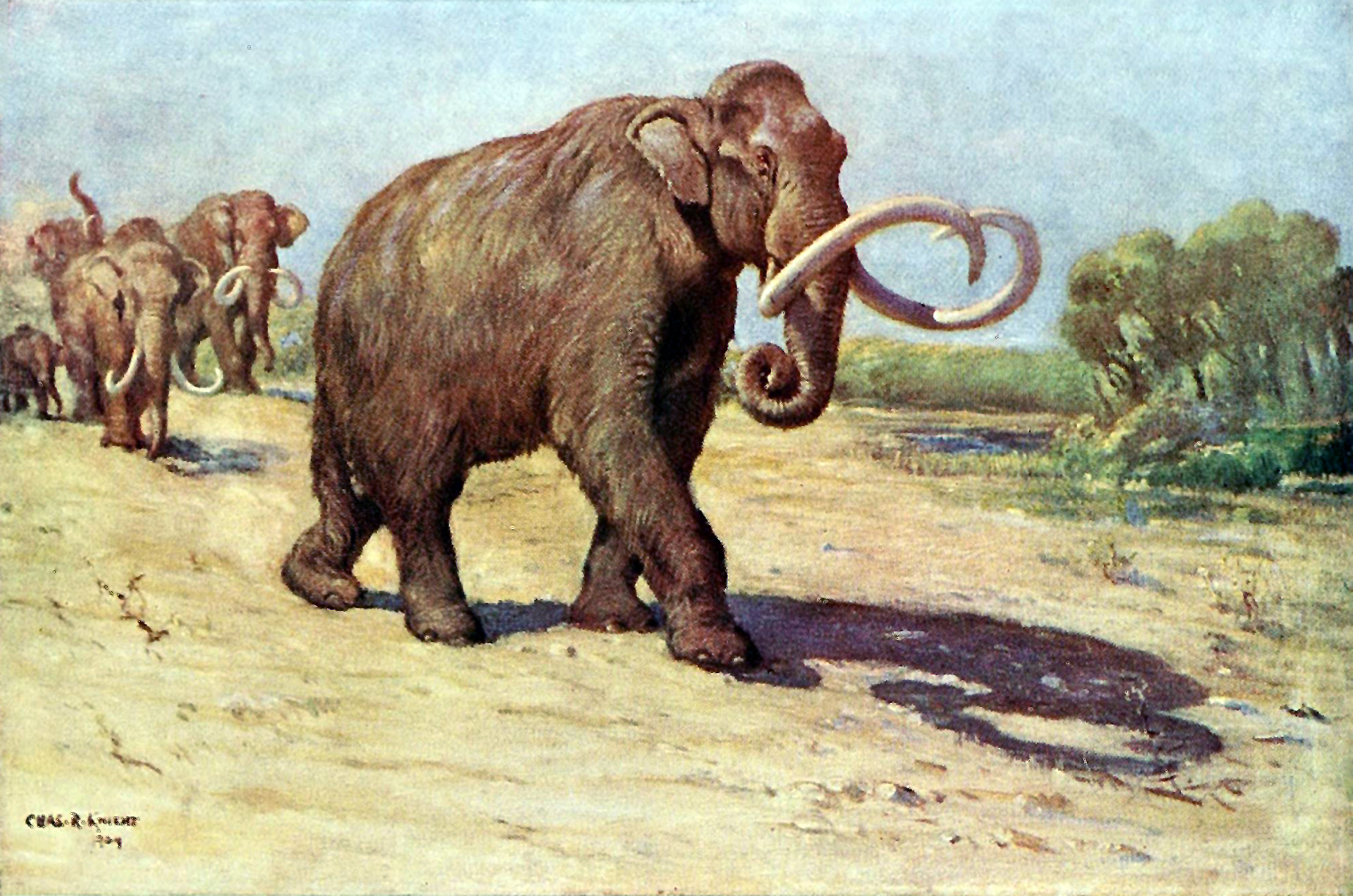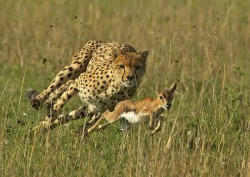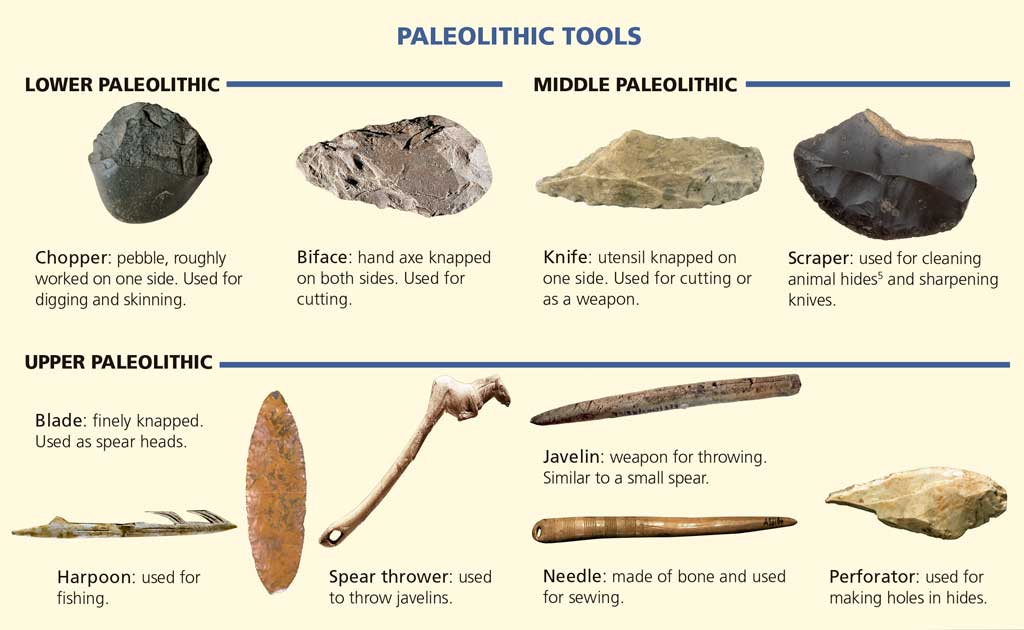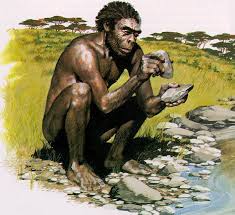First of all, we must study some vocabulary:
- A shelter: a safe place where the elements (wind, rain, cold...) don't affect you. You can use a cave or a tree... as shelters, to take refuge from bad weather.
- A dwelling: any place where you live: a house, a tent, a cave, a hut... To dwell is to live in a place (Spanish: "habitar").

A reindeer - A deer: a herbivorous wild animal. Male deer have big antlers on their head. (Deer is the same word for singular and plural: one deer, eight deer).
- Reindeer: a species of deer from the polar regions.
- A bison: A big and strong herbivorous wild bovid, with horns on its head. Very few bisons survive today in Europe and North America.
- A mammoth: an extinct species of hairy elephant that lived in cold regions thousands of years ago.
- A predator: an animal that hunts other animals for food.

Sewing - Hunting: capturing and killing animals for food.
- A scavenger: an animal that eats animal carcasses (dead animal bodies)
- To sew (careful! the pronunciation of this verb is exactly the same as to sow 'to plant seeds'):
To attatch two objects using a needle and thread. Sewing is a basic skill for making clothes. - An animal hide: the skin of an animal when it's cleaned and
treated for making clothes or shelters. When the skin has a lot of hair
and it's used for clothing, we call it fur. If it is without hair it is called leather (usually made of a cow's skin).

A mammoth 
A predator (a cheetah) hunting a gazelle A European bison 
A tent made of animal hides We are studying the Palaeolithic period, the longest period of prehistory.You can spell this name as your book does (Palaeolithic) or just Paleolithic, as in Spanish.We know already that the Palaeolithic period started when the first hominids appeared: about 4.4 million years ago (mya).This is the presentation for today's lesson.In this illustration you can see some Palaeolithic tools (click to see it larger)In this video you can see how hominids made a biface and lit fire:----TaskToday there is no form to answer. You're going to do an exercise instead.You must search for information about a palaeolithic tool and complete a table like this example: -
Student’s nameVíctorName of the toolBifacePeriod of prehistoryLower PalaeolithicApproxi-
mate chronologyBetween
900 000 and
780 000 years agoHominid species that made this tool(Probably) Homo heidelbergensisMaterialStoneTechnique (how the tool was made)Knapping or carving (striking two stones against each other)Use of this toolThis tool was used for various purposes: cutting wood, butchering animals, , breaking animal bones, etc.The deadline is Friday 3rd April, but don't worry if you have any problems, just let me know.I'm going to send you an e-mail containing the link to the document that you must complete.You're all going to work on the same document, but each one of you have to do his/her task in a different page. (Like this you can see what the others are doing so that you don't repeat the same thing). Please be careful: don't write in your other classmates' pages. I have written your names on each one of the pages.




